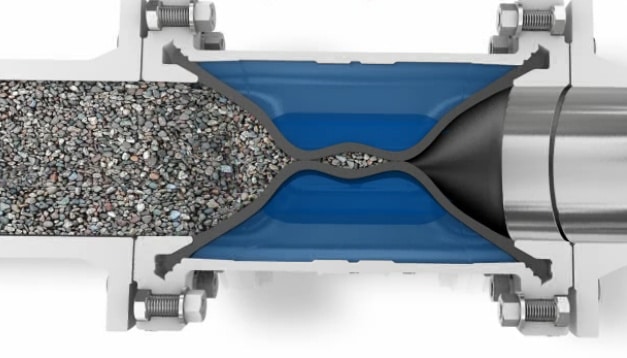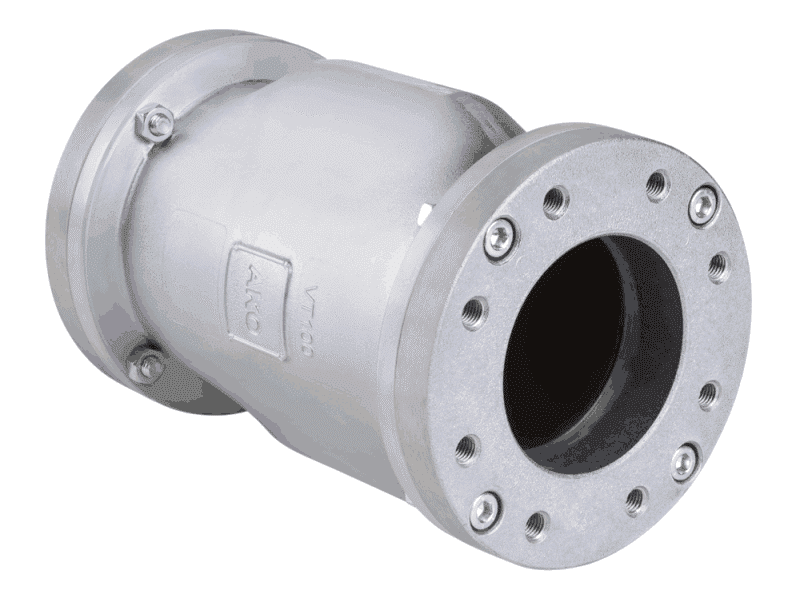Low Blocking Valves Keep a Free Flow of Product in any Industry
Low blocking valves of the rubber squeeze type (commonly recognised as the Pinch Valve) are extremely good at keeping a free passage with no dead spots or blockages. They are either operated pneumatically using compressed air, or manually with a hand wheel.
Manually operated low blocking valve closed with spring pistons
Both types have a specially constructed rubber sleeve or hose inside the body of the valve, which has a very high resilience and is exceptionally durable. Even when used on aggressive or corrosive media, the sleeves come in different types of rubber so can handle almost every application.











